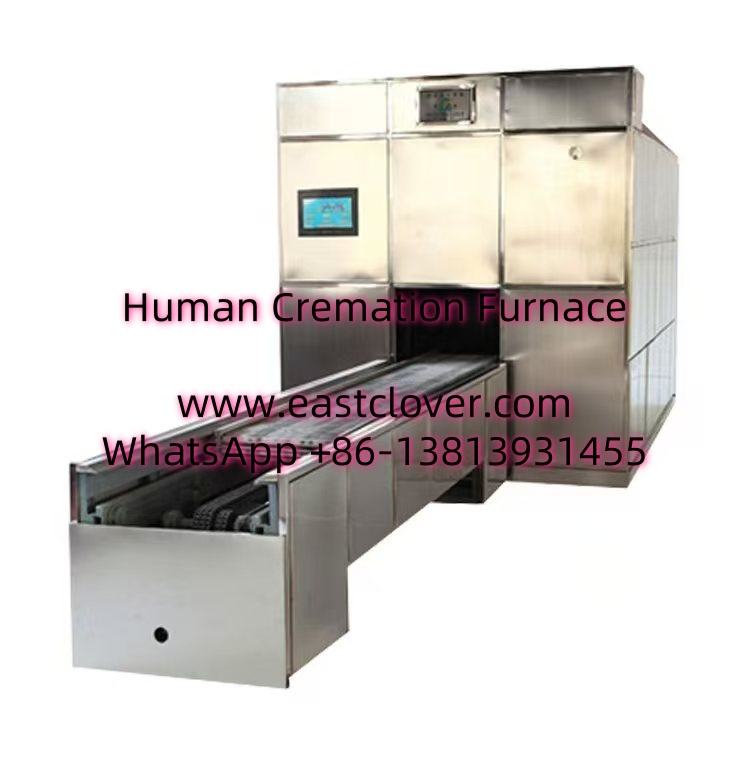Introduction
The landscape of end-of-life care is undergoing a transformative shift, driven by technological advancements and evolving societal needs. One such innovation making waves is the mobile container cremation furnace unit—a portable, efficient, and eco-friendly solution designed to address gaps in traditional cremation services. As populations grow and urbanization intensifies, the demand for accessible, dignified, and sustainable end-of-life solutions has never been greater. Mobile container cremation technology is emerging as a pivotal tool in meeting these demands, particularly in remote regions, disaster zones, and areas with limited infrastructure.
Understanding Mobile Container Cremation Furnace Units
A mobile container cremation furnace unit is a modular, transportable system housed within a standardized shipping container. These units integrate cremation chambers, emission control systems, and operational controls into a compact, mobile framework. Key components include:
- Cremation Chamber: A high-temperature furnace designed to reduce human remains to bone fragments (cremains) efficiently.
- Emission Control System: Filters and scrubbers to minimize pollutants, ensuring compliance with environmental regulations.
- Power Supply: Configurable for grid electricity, generators, or renewable energy sources.
- Control Panel: User-friendly interface for monitoring temperature, airflow, and safety protocols.
- Mobility Features: Reinforced chassis, wheels, or lifting points for easy transportation.
How It Works
The process begins with the placement of the deceased into the chamber, where temperatures exceeding 1,400°F (760°C) facilitate cremation. Advanced units utilize secondary combustion chambers and catalytic converters to reduce emissions. The entire process typically takes 2–3 hours, after which the cremains are processed into a fine ash and returned to the family.
Benefits of Mobile Cremation Technology
1. Flexibility and Accessibility
Mobile units bypass the need for permanent infrastructure, making cremation services accessible in rural areas, disaster sites, or temporary settlements. They can be rapidly deployed during emergencies, such as pandemics or natural disasters.
2. Environmental Sustainability
Traditional cremation releases carbon dioxide, mercury (from dental amalgams), and particulate matter. Mobile units often incorporate cleaner fuels (e.g., natural gas) and advanced filters, reducing their ecological footprint by up to 30% compared to fixed facilities.
3. Cost-Effectiveness
Building a brick-and-mortar crematorium requires significant investment. Mobile units offer a scalable, low-capital alternative, enabling municipalities or private operators to expand services without large upfront costs.
4. Cultural Sensitivity
In regions with diverse religious or cultural practices, mobile units can be customized to accommodate specific rites, such as continuous cremation or ceremonial protocols.
Applications and Use Cases
1. Remote and Underserved Communities
Indigenous communities, island nations, and mountainous regions often lack access to cremation services. Mobile units can circulate through these areas, providing dignified care without requiring families to travel long distances.
2. Disaster Response
During crises like earthquakes or disease outbreaks, traditional morgues and crematoriums may become overwhelmed. Mobile units help manage increased mortality rates while preventing public health risks.
3. Temporary Events
Large gatherings, such as pilgrimages or festivals, can strain local infrastructure. Deploying mobile units ensures preparedness for unforeseen fatalities.
Challenges and Considerations
Despite their advantages, mobile cremation units face challenges:
- Regulatory Hurdles: Compliance with varying local emissions standards and mortuary laws can complicate deployment.
- Public Perception: Skepticism about the dignity and efficacy of mobile cremation may require community education.
- Logistical Constraints: Fuel availability, maintenance, and skilled operators are critical for sustained operation in remote areas.
Future Trends
The integration of IoT sensors for real-time emissions monitoring, renewable energy compatibility, and hybrid systems combining flame-based and alkaline hydrolysis (water cremation) technologies are poised to redefine the sector. Additionally, partnerships with telehealth platforms could enable virtual memorial services, further expanding accessibility.
www.southclover.com
Mobile container cremation furnace units represent a significant leap forward in end-of-life care, blending innovation with compassion. By addressing logistical, environmental, and cultural challenges, these systems empower communities to honor their loved ones sustainably and equitably. As technology evolves and societal acceptance grows, mobile cremation could become a cornerstone of global mortality management, ensuring dignity and accessibility for all.
FAQs
- How does a mobile cremation unit differ from a traditional crematorium?
- Mobile units are portable, self-contained systems housed in shipping containers, whereas traditional crematoriums are fixed facilities with permanent infrastructure.
- Are mobile cremation units environmentally friendly?
- Yes. Advanced filtration and energy-efficient designs reduce emissions by up to 30% compared to conventional methods.
- Can these units operate in areas without electricity?
- Many models support alternative power sources, such as solar panels or diesel generators, for off-grid use.
- Is mobile cremation legally permissible everywhere?
- Laws vary by region. Operators must comply with local health, safety, and environmental regulations.
- How long does the cremation process take?
- Typically 2–3 hours, depending on body mass and furnace specifications.

Comments are closed